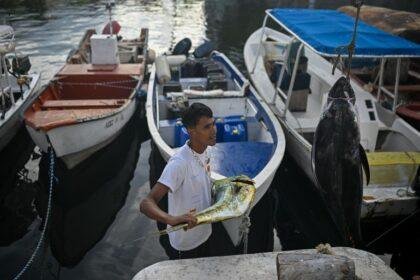Canadian Military Aircraft Monitors North Korean Trade Amid Rising Tensions in the East China Sea
Overview of Operation NEON
In the vast expanse of the East China Sea, a Canadian CP-140 Aurora maritime patrol aircraft is engaged in a critical mission. This aircraft, operated by the Royal Canadian Air Force, is primarily designed for anti-submarine warfare but is currently focused on tracking North Korean vessels suspected of engaging in illicit trade that contravenes United Nations sanctions. This operation, known as Operation NEON, represents Canada’s commitment to a multinational effort aimed at enforcing U.N. Security Council sanctions against North Korea, which are intended to curb the regime’s development of weapons of mass destruction.
The Mission’s Context
Operation NEON is not merely a routine surveillance mission; it is part of a broader international strategy to apply pressure on North Korea. Since the imposition of sanctions in 2006 following North Korea’s first nuclear test, the regime has continued to develop its nuclear capabilities, leading to heightened global concern. The Canadian aircraft operates from Kadena Air Base in Japan, a strategic U.S. military installation often referred to as the “keystone of the Pacific.” This base plays a pivotal role in U.S. military operations in the Asia-Pacific region, underscoring the importance of international cooperation in addressing security challenges.
Encounters with Chinese Military
During its mission, the Canadian crew has encountered significant challenges, including multiple interceptions by Chinese military aircraft. On one occasion, a Chinese supersonic fighter jet approached the Aurora, prompting a tense exchange. The Canadian pilot, who remains unnamed due to operational security, calmly asserted, “I’m a Canadian aircraft operating in international airspace, carrying out the duties of all nations.” This incident highlights the delicate balance of power in the region, where military encounters can escalate tensions.
Brigadier General Jeff Davis, who oversees the Canadian operation, emphasized the importance of professionalism and safety during these encounters. “As long as things remain professional and safe, this mission continues unabated,” he stated. However, the presence of Chinese military aircraft adds an element of unpredictability to the operation, raising concerns about the safety of the Canadian crew.
The Role of China and Russia
China has long been North Korea’s primary economic supporter, providing essential resources that have allowed the regime to withstand international sanctions. In recent years, Russia has also increased its involvement, supplying North Korea with oil in exchange for military support in the ongoing conflict in Ukraine. This evolving dynamic complicates the enforcement of sanctions and raises questions about the effectiveness of international efforts to curb North Korea’s nuclear ambitions.
Historically, both China and Russia have expressed opposition to North Korea’s nuclear development. However, their recent actions suggest a shift in priorities, as both nations appear to be more willing to support the Kim regime. This shift poses significant challenges for countries like Canada, which are committed to enforcing sanctions and promoting regional stability.
The Stakes of Nuclear Proliferation
North Korea’s nuclear capabilities have become a pressing global concern. Estimates suggest that the regime possesses approximately 50 nuclear weapons and is on the verge of developing long-range missiles capable of reaching the U.S. mainland. The international community has grappled with how to address this threat, with various diplomatic efforts yielding limited results.
Former U.S. President Donald Trump famously engaged in a series of high-profile summits with North Korean leader Kim Jong Un, but these meetings ultimately failed to produce meaningful progress toward denuclearization. Kim has since expressed a willingness to continue dialogue, but only if the U.S. abandons its “absurd obsession with denuclearization.” This impasse underscores the complexities of international diplomacy in the face of a determined regime.
The Risks of Surveillance Missions
The Canadian crew’s mission is fraught with risks, particularly given the aggressive posture of the Chinese military. The pilot acknowledged the added stress that these encounters can create, stating, “It can add some stressors. Sometimes they’re trying to maneuver, but we try to mitigate as best we can and keep the aircraft safe.” The presence of Chinese fighter jets not only complicates the mission but also raises the stakes for the Canadian personnel involved.
Despite these challenges, the Aurora’s crew remains committed to their mission. After nine hours of intelligence gathering, the aircraft returned to base, having successfully documented suspicious vessels and gathered critical information to be shared with the United Nations’ Enforcement Coordination Cell.
Conclusion
Operation NEON exemplifies the complexities of modern military operations in a geopolitically charged environment. As Canada and its allies work to enforce U.N. sanctions against North Korea, the challenges posed by regional powers like China and Russia become increasingly apparent. The ongoing surveillance missions not only serve to gather intelligence but also highlight the delicate balance of power in the East China Sea. As tensions continue to rise, the international community must navigate these challenges with caution, striving for a resolution that promotes stability and security in the region.











